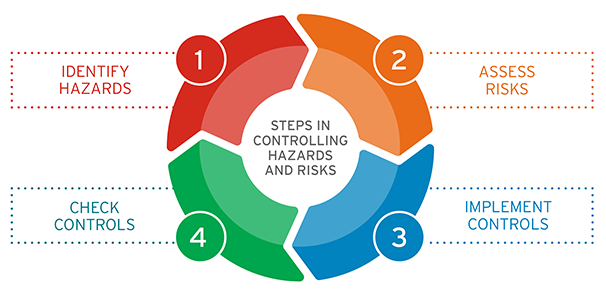Identify appropriate controls by understanding odour hazards and risks
Follow a risk management process to help you understand and manage odour hazards and risks from your business. You can learn how to follow a risk management process involving these steps:

Following a risk management process will also help you identify controls to put in place.
Put controls in place
Before you put controls in place, consider your approach to planning and site management.
For example, does your site layout help or hinder your control of hazards and risks? Do your business processes, systems and activities help you prevent harm?
The controls you put in place will depend on your business activities and the type of odour.
Aiming to prevent the odour is the preferred approach. Other approaches involve:
- substituting the cause of the odour with an alternative that doesn’t generate odour
- physical controls
- administrative controls, such as procedures and training.
EPA has help for how you can control odour. You can use other controls, so long as you can demonstrate you have eliminated or reduced the risk of harm as far as reasonably practicable.
Masking agents such as air fresheners and sprays aren’t effective methods for controlling odour pollution.
You may also need to seek additional or more tailored advice from a suitably qualified person. This might involve engaging a consultant.
Resources to help you manage risk
EPA has guidance on odour, and you can find guidance for your industry.
These resources can also help build what we call state of knowledge:
Australian Standards
- AS4323.3 – Stationary source emissions Part 3: Determination of odour concentration by dynamic olfactometry.
- AS4114 – Spray painting booths, designated spray painting areas and paint mixing rooms.
- AS4454 – Composts, soil conditioners and mulches.
Read next
About managing odour hazards and risks
Respond to an odour incident or complaint
Read more about odour
Reviewed 4 May 2021



